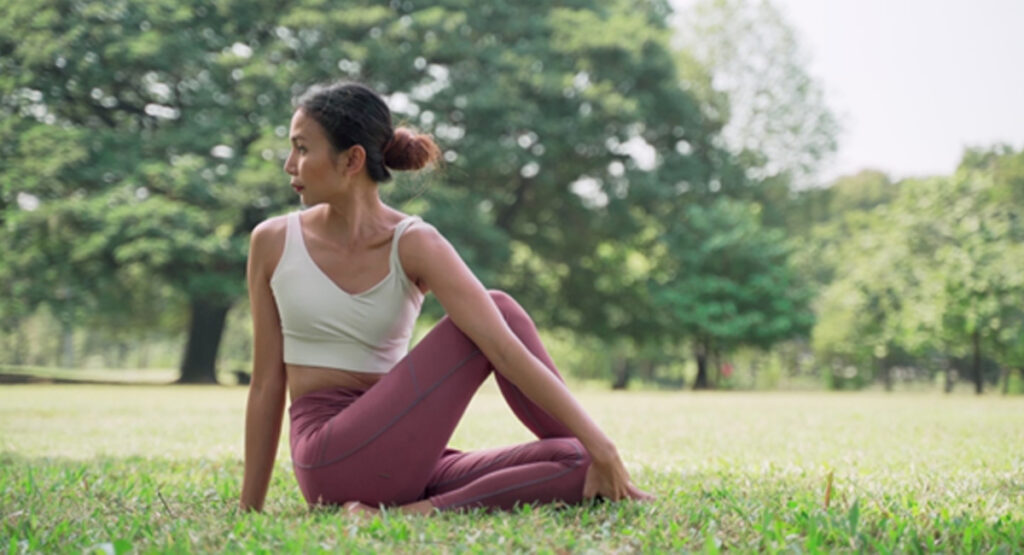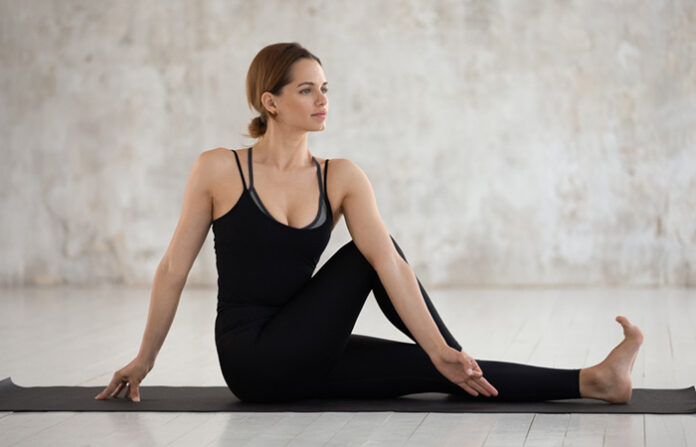Yoga is a practice that has been around for centuries, offering a wide range of physical and mental benefits. One popular yoga pose that provides numerous advantages is the Half Fish Pose, also known as Ardha Matsyendrasana. This seated twisting posture not only helps improve flexibility but also aids in digestion, strengthens core muscles, and promotes detoxification. In this article, we will delve into what Half Fish Pose is, how to perform it correctly, its benefits, precautions to keep in mind, and how it differs from the similar-sounding Half Lord Fish Pose.
What is Half Fish Pose?

Half Fish Pose, or Ardha Matsyendrasana, is a seated twisting yoga posture that targets the spine, abdomen, and hips. The name “Ardha Matsyendrasana” is derived from the Sanskrit words “ardha” meaning half, “matsya” meaning fish, “indra” meaning king, and “asana” meaning pose. This asana is named after the yogi Matsyendranath, one of the founders of Hatha Yoga.
Health Benefits of Half Fish Pose:
- Improves spinal flexibility
- Enhances digestion
- Strengthens core muscles
- Stimulates detoxification
- Enhances blood circulation
- Relieves stress and anxiety
- Improves posture
Here is a step-by-step guide on how to perform Half Fish Pose correctly:
How to do Half Fish Pose in Yoga?
Step 1:
Sit on the floor with your legs extended in front of you.
Step 2:
Bend your knees and place your left foot under your right leg, with the left sole resting on the floor.
Step 3:
Cross your right foot over your left leg and place it on the floor outside your left hip.
Step 4:
Inhale and lengthen your spine upwards.
Step 5:
As you exhale, twist your torso to the right, bringing your left elbow to the outside of your right knee.
Step 6:
Place your right hand behind you for support and to deepen the twist.
Step 7:
Hold the pose for about 30 seconds while breathing deeply.
By following these steps, you can experience the full benefits of Half Fish Pose in your yoga practice.
Benefits of Half Fish Pose
1. Improves Spinal Flexibility:
Half Fish Pose helps to increase the flexibility of the spine, promoting better mobility and reducing the risk of back pain and injuries.
2. Enhances Digestion:
The twisting motion in Half Fish Pose stimulates the abdominal organs, improving digestion and alleviating issues such as bloating and indigestion.
3. Strengthens Core Muscles:
This asana engages the core muscles, including the obliques and transverse abdominis, helping to strengthen and tone the abdominal region.
4. Stimulates Detoxification:
The twisting action in Half Fish Pose wrings out toxins from the organs and tissues, supporting the body’s natural detoxification processes.
5. Enhances Blood Circulation:
The twisting motion also helps to improve blood circulation throughout the body, delivering oxygen and nutrients to cells more efficiently.
6. Relieves Stress and Anxiety:
Practicing Half Fish Pose can help calm the mind, reduce stress, and alleviate feelings of anxiety, promoting overall mental well-being.
7. Improves Posture:
By opening up the chest and shoulders and lengthening the spine, Half Fish Pose can help improve posture and alignment.
Incorporating Half Fish Pose into your regular yoga routine can provide a multitude of benefits for both the body and mind.
Half Fish Pose vs. Half Lord Fish Pose
While Half Fish Pose and Half Lord Fish Pose (Ardha Matsyendrasana) may sound similar, they are two distinct yoga postures with different variations and benefits.
Half Fish Pose (Ardha Matsyendrasana):
- Seated twisting posture
- Focuses on spinal flexibility and digestion
- Involves crossing one leg over the other in a seated position
Half Lord Fish Pose (Ardha Matsyendrasana):
- Seated twisting posture
- Focuses on spinal rotation and hip opening
- Involves binding the arms and twisting deeper into the pose
Both poses offer unique advantages and can be incorporated into a well-rounded yoga practice for overall health and wellness.
Precautions for Half Fish Pose
While Half Fish Pose offers many benefits, it is essential to practice it mindfully and with caution, especially if you have any existing health conditions. Here are some precautions to keep in mind when practicing Half Fish Pose:
- Avoid if Pregnant: If you are pregnant, avoid deep twists like Half Fish Pose, as they can put pressure on the abdomen and potentially harm the fetus.
- Back or Spinal Issues: If you have any back or spinal issues, such as herniated discs or sciatica, consult with a healthcare provider before attempting Half Fish Pose.
- Knee or Hip Injuries: Be mindful of your knees and hips during the pose, and if you have any injuries in these areas, modify the pose or skip it altogether.
- Neck Strain: Avoid straining your neck by keeping it aligned with your spine and not forcing the twist beyond your comfort level.
- Breathing: Remember to breathe deeply and evenly throughout the pose to enhance relaxation and oxygen flow to the muscles.
By taking these precautions and listening to your body, you can safely enjoy the benefits of Half Fish Pose in your yoga practice.
Conclusion
In conclusion, Half Fish Pose (Ardha Matsyendrasana) is a valuable yoga posture that offers a wide array of benefits for the body and mind. By incorporating this twisting pose into your practice, you can improve spinal flexibility, enhance digestion, strengthen core muscles, stimulate detoxification, and promote overall well-being. Remember to practice Half Fish Pose mindfully, following the correct alignment and breathing techniques, and to take precautions if you have any underlying health issues. Whether you are a seasoned yogi or a beginner, Half Fish Pose can be a beneficial addition to your yoga routine, helping you achieve balance, strength, and vitality.



